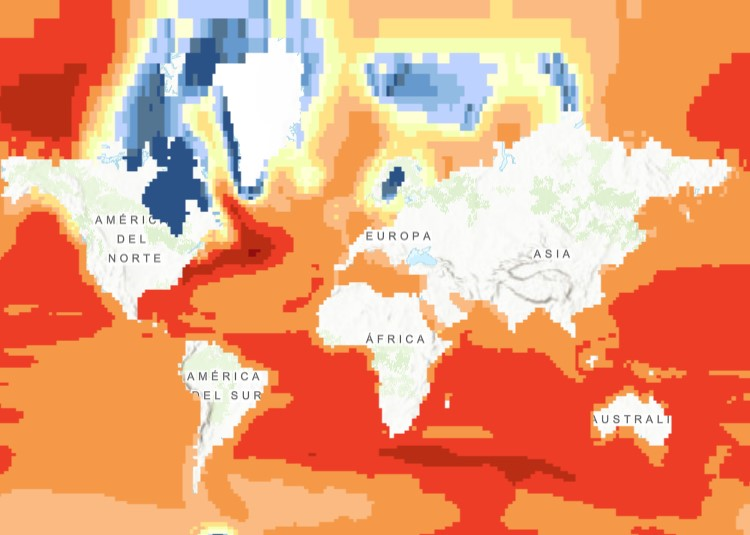ENSEMBLES
Type of resources
Available actions
Topics
INSPIRE themes
Keywords
Contact for the resource
Provided by
Years
Formats
Representation types
Update frequencies
Scale
Resolution
-

The raster dataset (1ºx1º) shows the projected change in relative sea level (in metres) in 2081-2100 compared to 1986-2005 for the medium-low emission scenario RCP4.5, based on an ensemble of Coupled Model Intercomparison Project Phase 5 (CMIP5) climate models. Projections consider land movement due to glacial isostatic adjustment but not land subsidence due to human activities. No projections are available for the Black Sea. The dataset has been used as a source for an earlier version of the EEA indicator “Global and European Sea Level”: https://www.eea.europa.eu/data-and-maps/indicators/sea-level-rise-5/assessment.
-

The gridded dataset presents the forest fire danger in Europe for projected climate conditions under the Representative Concentration Pathways (RCP) 4.5 scenario for the temporal range 2071-2100. The forest fire danger is expressed by the average Seasonal Severity Rating index (derived from the Canadian Fire Weather Index System), provided by the Joint Research Centre. The SSR series was computed usign the GCM-RCM run KNMI-RACMO2-ECHAM5 of ENSEMBLES project. Average 2071-2100 SSR levels are provided in the dataset. The dataset contributes to an earlier version of the EEA indicator "Forest fires": https://www.eea.europa.eu/data-and-maps/indicators/forest-fire-danger-2/assessment.
-

The dataset presents the annual number of Cooling Degree Days (CDD) in average for the period 1990-2015, for a series of individual European cities from Eurostat's Urban Audit 2011-2014 spatial dataset, based on the E-OBS dataset from the EU-FP6 project ENSEMBLES (http://ensembles-eu.metoffice.com) and around 10,000 meteorological stations across Europe. This dataset has been used in the EEA Report No 22/2018 "Unequal exposure and unequal impacts: social vulnerability to air pollution, noise and extreme temperatures in Europe" (https://www.eea.europa.eu/publications/unequal-exposure-and-unequal-impacts/at_download/file), where CDD is defined as the sum of the difference in degrees between 21 °C and the mean temperature over the year, for the days when the mean daily temperature is higher than 21 °C. The number of CDDs is useful in differentiating between areas based on the need for cooling homes or workplaces. As a measurement designed to quantify the demand for energy needed to cool a building in order to keep it at a comfortable temperature, it is relevant to issues of thermal comfort and energy affordability.
 RUC Geo-Data catalogue
RUC Geo-Data catalogue